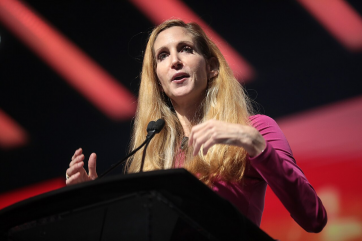More students are going to medical school than ever before, according to a recent study.
According to data released from the Association of American Medical Colleges (AAMC), the number of students who enrolled in the nation's medical schools for the first time in 2014 has reached a new high, totaling 20,343. The total number of applicants to medical school also rose by 3.1 percent, to a record 49,480. First-time applicants increased by 2.7 percent to 36,697.
"In spite of the ongoing partisan debate around the nation's health care system, it is gratifying to see that increasing numbers of student want to become physicians. However, these results show that our nation must act without delay to ensure an adequate number of residency training positions for these aspiring doctors so they will be able to care for our growing and aging population," AAMC President and CEO Darrell G. Kirch said in a statement. "As we face a worsening shortage of both primary and specialty physicians over the next two decades, Congress must increase federal support for residency training by lifting the 17-year-old cap on residency training positions imposed under the Balanced Budget Act."
The diversity of the nation's medical students showed signs of progress again this year. The number of Hispanic or Latino enrollees increased by 1.8 percent to 1,859 in 2014, with the number of applicants increasing by 9.7 percent to 4,386. African American enrollees rose 1.1 percent to 1,412, while the number of applicants increased by 3.2 percent to a total of 3,990. Gains in enrollment among African Americans are attributable to a 3.1 percent increase in male enrollees. In addition, American Indian and Alaska Native enrollees showed notable growth, increasing almost 17 percent, from 173 enrollees the previous year to 202 in 2014. The number of applicants from these groups increased by 5.6 percent (from 425 in 2013 to 449 in 2014).
As in prior years, males enrolling in medical school accounted for approximately 52 percent of students in 2014, while females accounted for nearly 48 percent of enrolled students. Among first-time applicants, the number of women rose by 3.3 percent to 17,625 compared to a 2.1 percent increase in first-time male applicants (19,066) this year.
"Medical schools understand that an effective physician workforce is a diverse workforce," Kirch said. "In addition to schools using new, innovative admissions practices that look at attributes and experiences in addition to grades and test scores, they also are working to strengthen the K-12 pipeline. The gains we are seeing show that we are making progress, but there still needs to be more work done to diversify the talent pool."
The gains in the numbers of overall applicants and enrollees are being driven by the expansion of the nation's medical school capacity, which the AAMC called for in 2006 to address the projected physician shortage. Since 2002, enrollment at the nation's medical schools has increased by 23.4 percent, and 17 new medical schools have been established.








